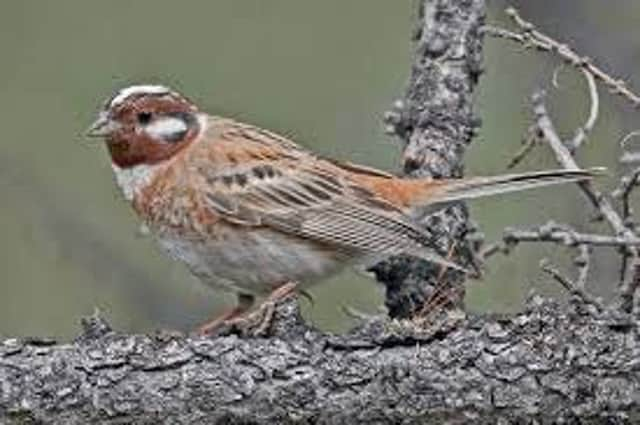Birdwatch: Pine bunting the next to star as a rare Siberian visitor


This time it was the turn of the village of Dunnington just to the east of York to be visited by hundreds of birdwatchers after the discovery of a male pine bunting.
York birder Chris Gomersall first identified it last Friday among a flock of about 250 yellowhammers and other buntings and finches in a setaside stubble field off Intake Lane and it remained there into this week.
Advertisement
Hide AdAdvertisement
Hide AdPine buntings are widespread in Siberia breeding in open forests just to the west of the Ural Mountains.
In autumn the majority migrate south across Asia with Israel one of the more westerly wintering areas.
A few also winter regularly in the Tuscany region of Italy and in the south of France but elsewhere in Europe, including Britain, the pine bunting is a rare vagrant.
There have been about 50 UK records since the first on Fair Isle in 1911, the majority in October and November including about six in Yorkshire.
Advertisement
Hide AdAdvertisement
Hide AdThere has been an influx into northern Europe this winter with a female seen in Shropshire on New Year’s Day and others, including small groups, over the past few days in the Netherlands, Belgium, and Switzerland. There could be more waiting to be found in Britain.
Most have been seen among flocks of yellowhammers – the two species are closely related and can interbreed. Male pine buntings have a white crown and cheek, edged with rufous and black and a rusty red back streaked with black. Females are greyer and less well marked so are much harder to pick out among yellowhammer flocks –some no doubt go unnoticed as a result
The pine bunting is the latest in a series of rare birds from eastern Russia seen in the region including two Siberian accentors, a black-throated thrush at the RSPB’s Adwick Washlands reserve in South Yorkshire, a dusky thrush at Beeley, Derbyshire and several Siberian chiffchaffs, the latest being this week at the St Aidan’s site, Leeds – what will the next one be?
More Eurasian white-fronted geese have been reported with a peak count of 58 in a field around Seamer Tip pools near Scarborough and others at Filey and Flamborough and smaller numbers inland including six at Swillington Ings.
Advertisement
Hide AdAdvertisement
Hide AdSeveral tundra bean geese were reported among flocks of pink-footed geese good numbers of which have been taking advantage of the calm conditions to move across to Lancashire on the first stage of their journey back to Icelandic breeding grounds.
Other sightings along the Yorkshire coast included two black redstarts on rocks near the Albert Drive café in North Bay Scarborough and one on Carr Naze, Filey while another has been present in the Trinity churchyard at North Ossett, West Yorkshire regularly feeding in the gutters on the church roof.
Two Bewick’s swans have been seen with whooper swans at North Duffield Carrs.